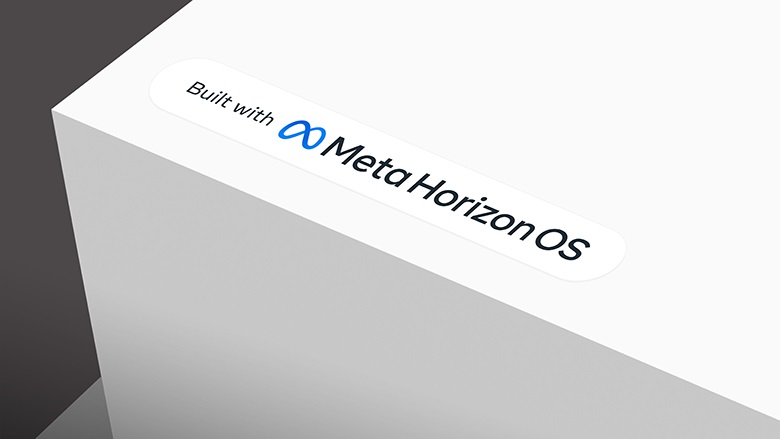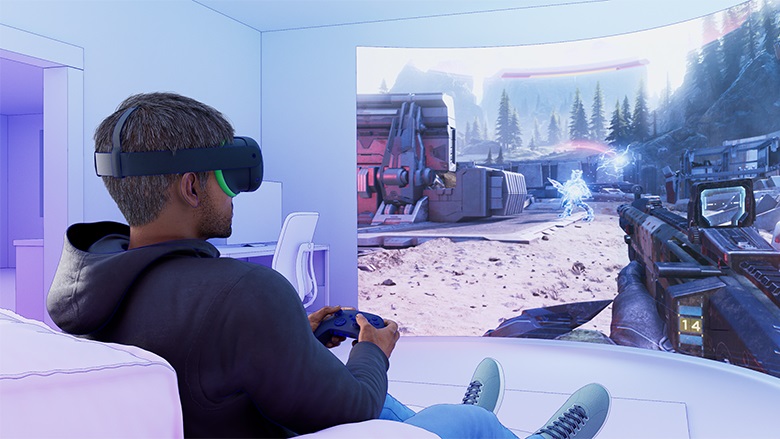
In Mixed Reality News
April 23, 2024 – Meta has this week announced that it is advancing its commitment to an open computing platform by opening up the ‘Meta Horizon OS’ operating system powering its Meta Quest devices to third-party hardware manufacturers. The company stated that the move will make it easier for developers to build apps and reach their audiences on its platform.
What is Meta Horizon OS?
Meta Horizon OS is the mixed reality operating system that powers Meta’s Quest line of headsets. The OS combines the core technologies powering Meta’s mixed reality experiences with a suite of features that put social presence at the center of the platform.
Developed over ten years, Meta Horizon OS features technologies such as inside-out tracking, eye and hand tracking, and high-resolution Passthrough for an immersive mixed reality experience. The operating system is built on the Android Open Source Project.
What companies are building devices on Meta Horizon OS?
Meta stated in its announcement that leading global technology companies are already working on new devices built on Meta Horizon OS. These include:
ASUS’ Republic of Gamers will use its expertise in gaming solutions to develop an all-new performance gaming headset. Commenting on this, S.Y. Hsu, Co-CEO at ASUS, said: “We’ve been inspired by the incredible gaming community that has formed around virtual and mixed reality, and we know that the most passionate gamers want high-performance hardware. With Meta Horizon OS, ASUS and Republic of Gamers will build the gaming headset of the next generation.”
Lenovo, which already has experience co-designing Oculus Rift S, is also developing mixed reality devices for productivity, learning, and entertainment, according to Meta. Yuanqing Yang, Chair & CEO at Lenovo, stated: “Building from our past successful partnership, Lenovo is bringing together Meta Horizon OS with our leadership and innovation in personal computing to accelerate adoption of new user scenarios in mixed reality like virtual screens, remote presence, content consumption, and immersive training.”
Xbox, which teamed up with Meta last year to bring Xbox Cloud Gaming (Beta) to Meta Quest, enabling Quest users to play Xbox games on a large 2D virtual screen in mixed reality. Now, the two companies are working together again to create a limited-edition Meta Quest, inspired by Xbox.

Meta noted that all of the devices being built by the above companies will benefit from Qualcomm Technologies’ Snapdragon processors, which are tightly integrated with Meta’s software and hardware stacks, the latest of which being the XR2 Gen 2 Platform that launched with the Quest 3.
Does this mean a more open app ecosystem from Meta?
Meta also announced that it is taking steps to enhance its app ecosystem by reducing barriers between the Meta Horizon Store and App Lab, allowing developers easier access to market their software. App Lab titles will soon be featured in a dedicated section of the Store on all Meta’s devices, making them more discoverable to larger audiences and easier for developers to quickly ship their titles on Meta’s platform.
Furthermore, a new spatial app framework from Meta is in development to assist mobile developers in transitioning their applications to mixed reality environments.
Will the future of mixed reality be an open one?
With this announcement, Meta is positioning itself as a proponent of a more inclusive and collaborative mixed reality environment. The company noted that both consumers and developers are the ones who stand to benefit the most from an ecosystem where multiple hardware makers build on a common platform.
Meta’s approach stands in contrast to Apple’s strategy, which traditionally emphasizes a closed ecosystem with tightly controlled hardware and software integration, as is currently the case with the Apple Vision Pro. As the mixed reality market evolves, an open platform like Meta’s could be the key to driving faster innovation and adoption across the spatial computing space.
Image credit: Meta
About the author
Sam is the Founder and Managing Editor of Auganix. With a background in research and report writing, he has been covering XR industry news for the past seven years.
